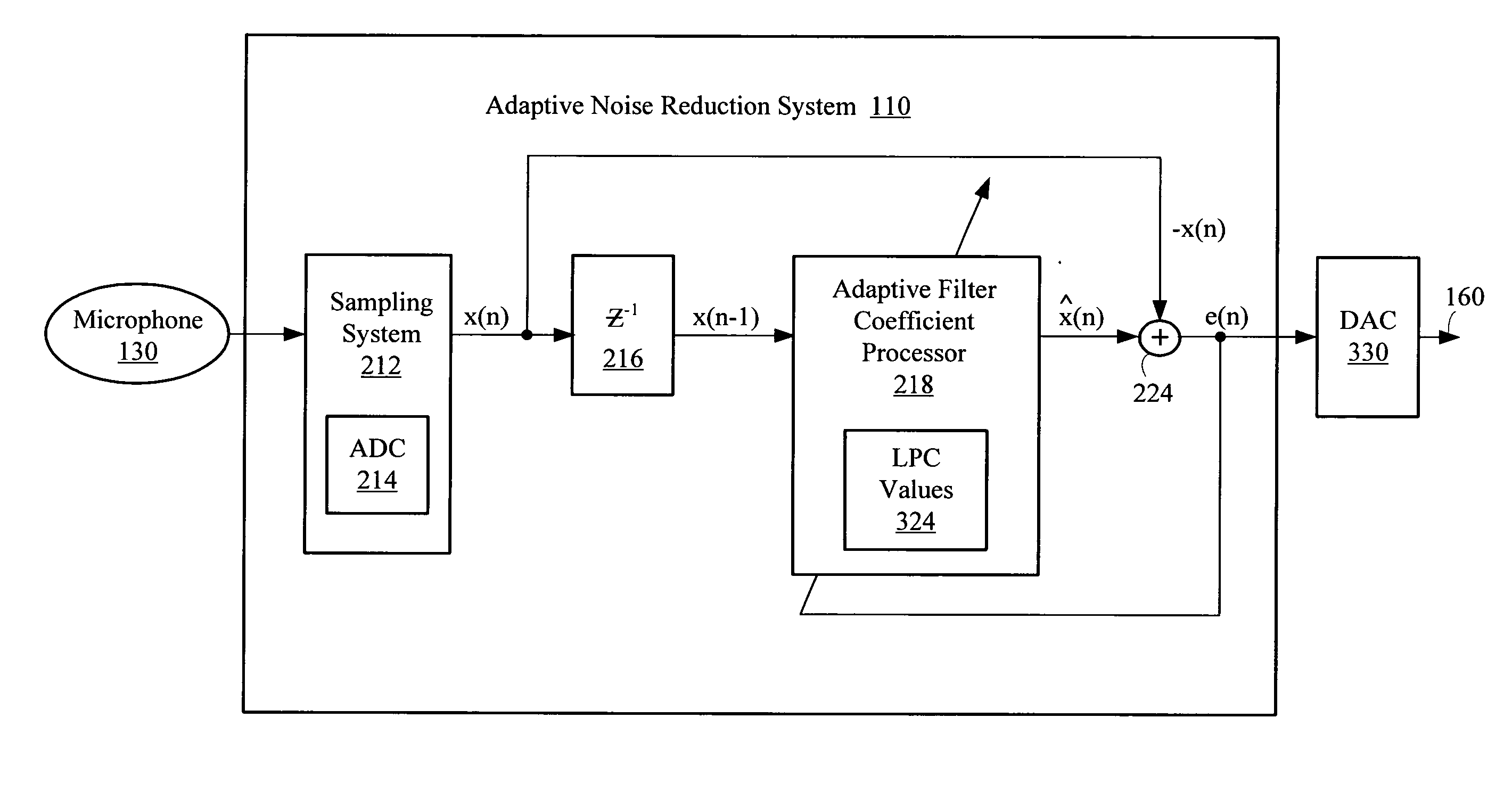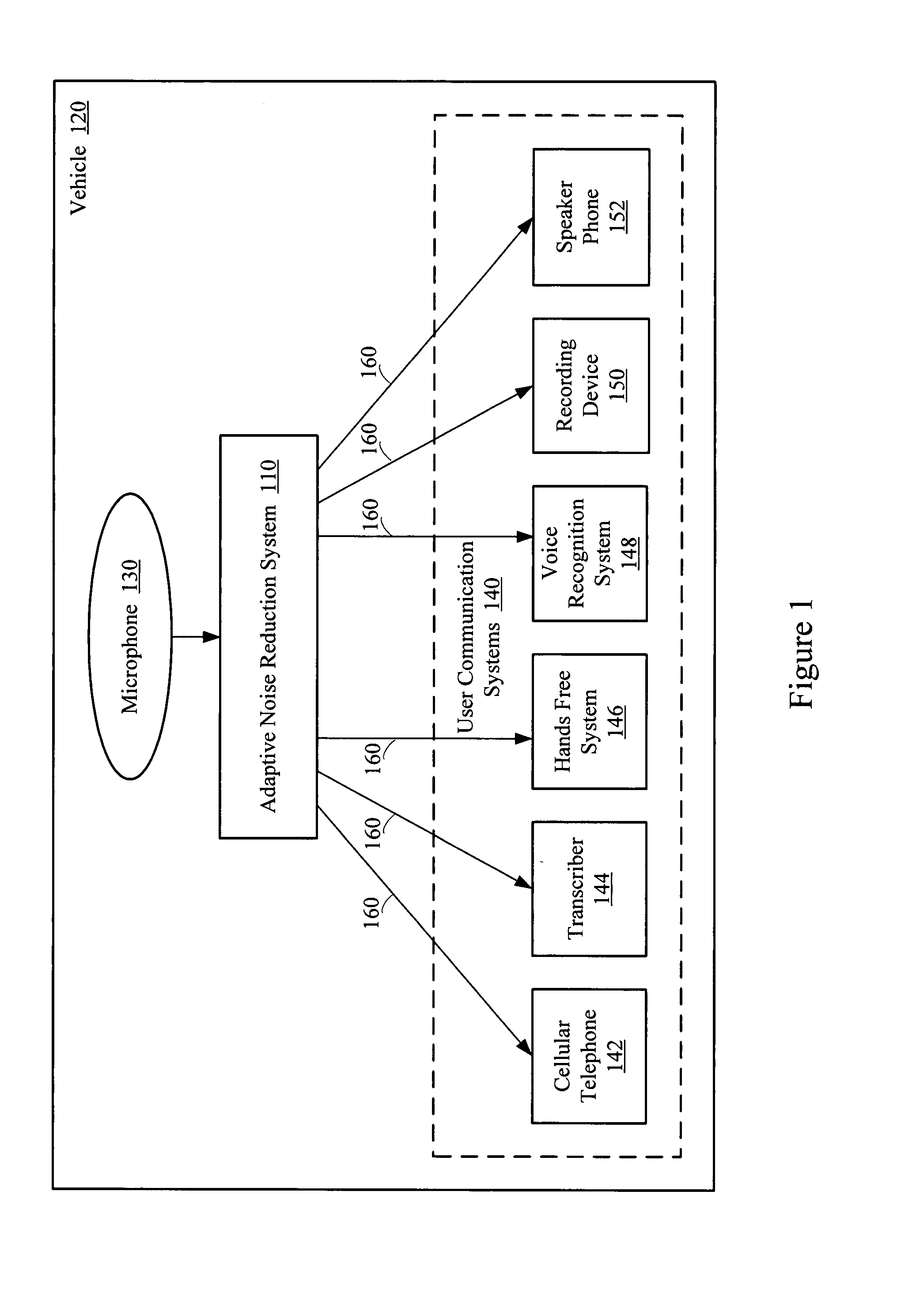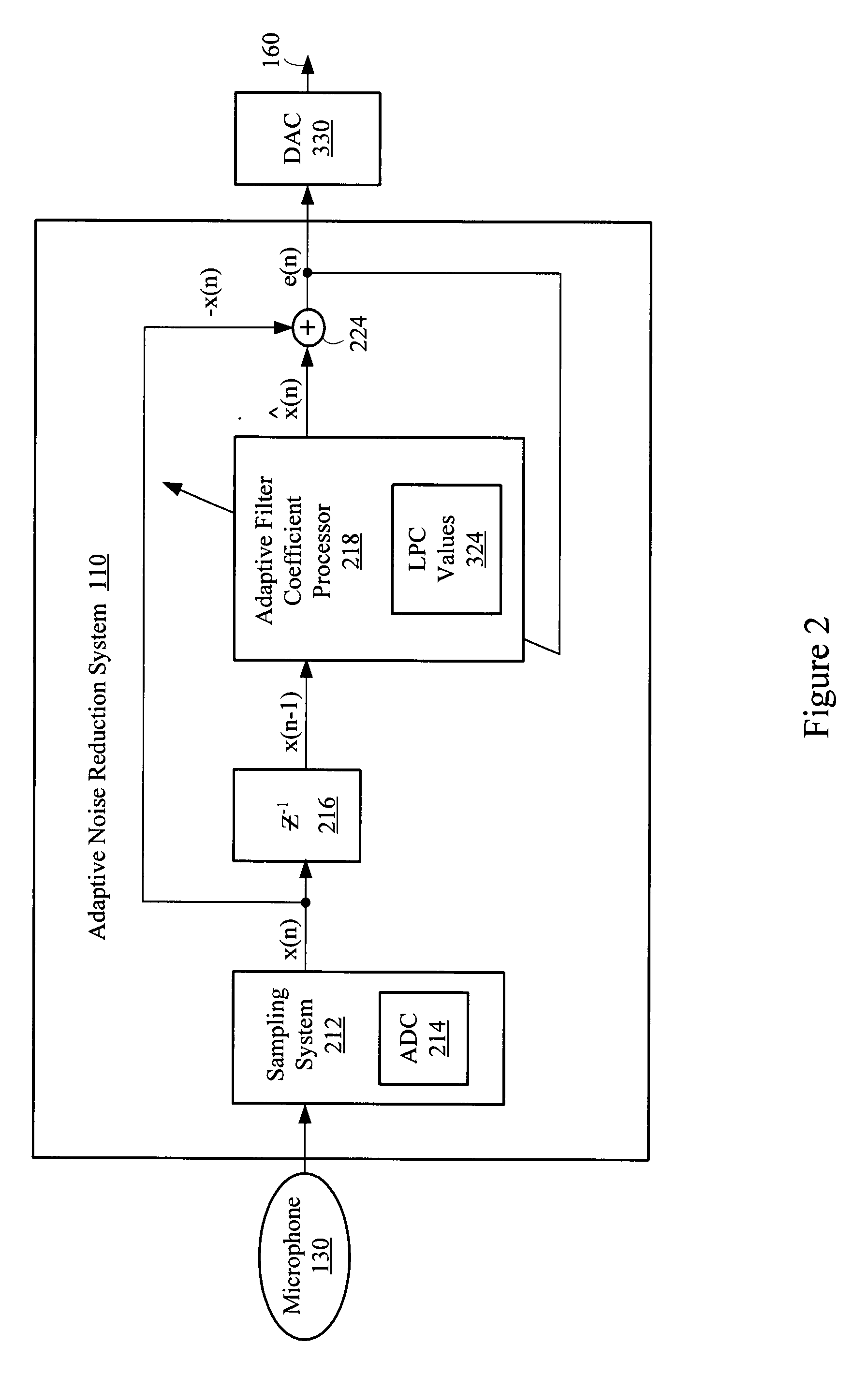Adaptive LPC noise reduction system
a technology of low-frequency noise and noise reduction, applied in the field of noise suppression, can solve the problems of indiscriminate elimination of desired signal content, affecting the intelligibility of speech signals, and affecting the speech signal background noise, etc., and achieve the effect of reducing low-frequency nois
- Summary
- Abstract
- Description
- Claims
- Application Information
AI Technical Summary
Benefits of technology
Problems solved by technology
Method used
Image
Examples
Embodiment Construction
[0020]FIG. 1 shows an adaptive noise reduction system 110 in a vehicle environment 120. The adaptive noise reduction system 110 may receive speech signals from a device that converts sound into operational signals, such as a microphone 130 in a user system 140. The user system 140 may be a device that receives speech signals where the fidelity of the speech signal is considered. The user systems 140 may include a cellular telephone 142, a transcriber 144, a hands-free system 146, a voice recognition system 148, a recording device 150, a speakerphone or other communication system. The adaptive noise reduction system 110 may be interposed between the microphone 130 and the circuitry of the specific user system 140, or may be incorporated into the specific user system 140. The adaptive noise reduction system 110 may be used in a user system where speech signals are processed or transmitted. The respective user systems 140 may receive an output signal 160 from the adaptive noise reducti...
PUM
 Login to View More
Login to View More Abstract
Description
Claims
Application Information
 Login to View More
Login to View More - R&D
- Intellectual Property
- Life Sciences
- Materials
- Tech Scout
- Unparalleled Data Quality
- Higher Quality Content
- 60% Fewer Hallucinations
Browse by: Latest US Patents, China's latest patents, Technical Efficacy Thesaurus, Application Domain, Technology Topic, Popular Technical Reports.
© 2025 PatSnap. All rights reserved.Legal|Privacy policy|Modern Slavery Act Transparency Statement|Sitemap|About US| Contact US: help@patsnap.com



